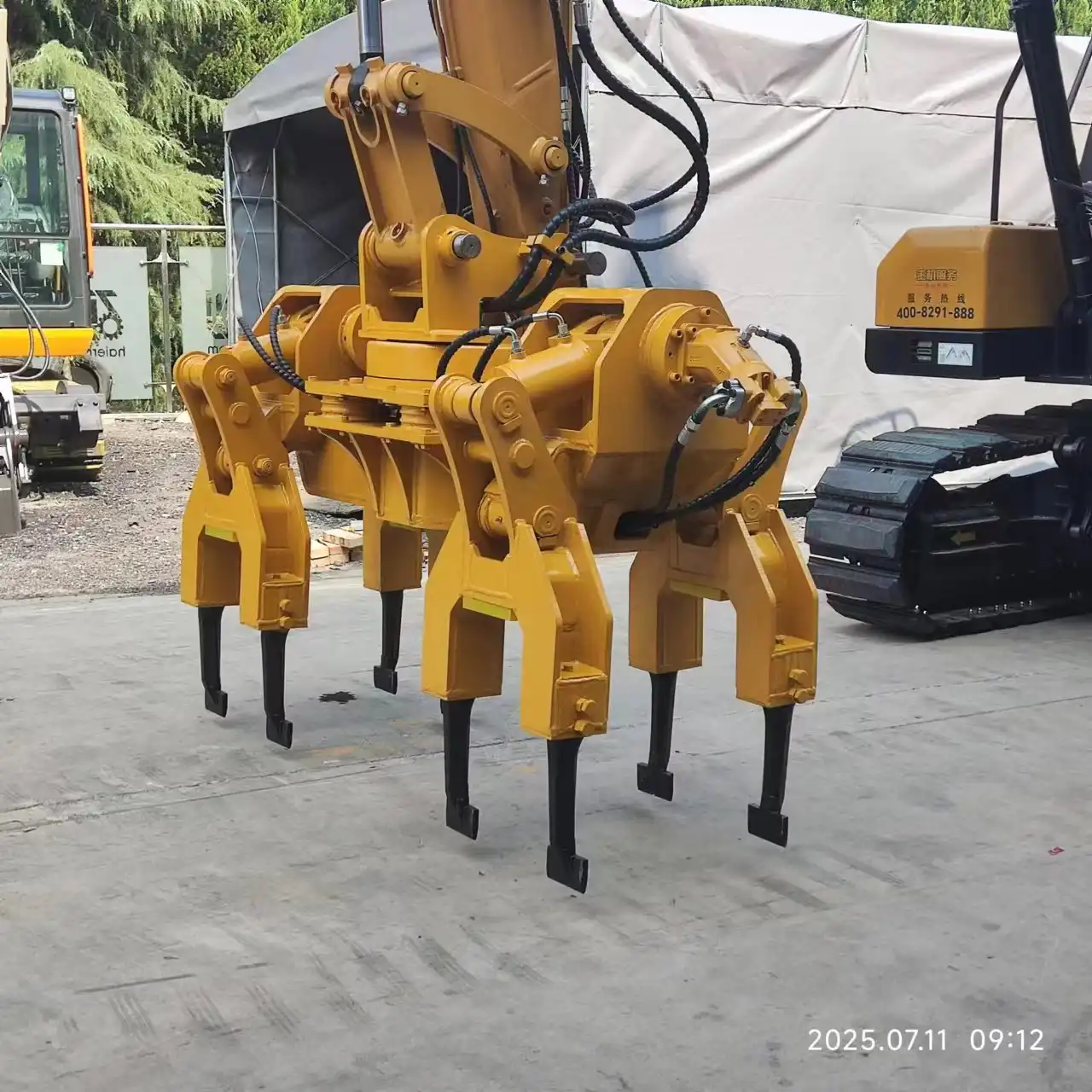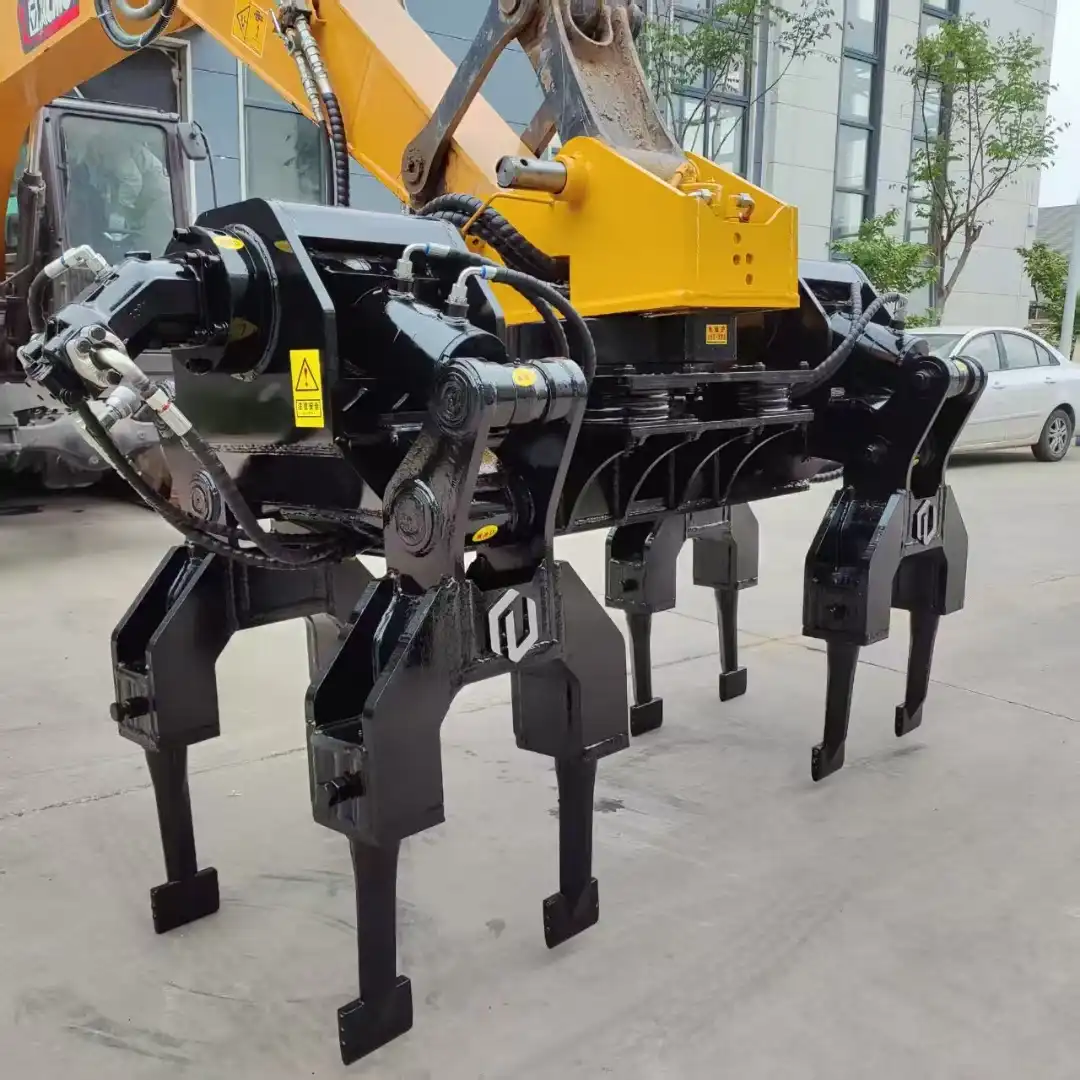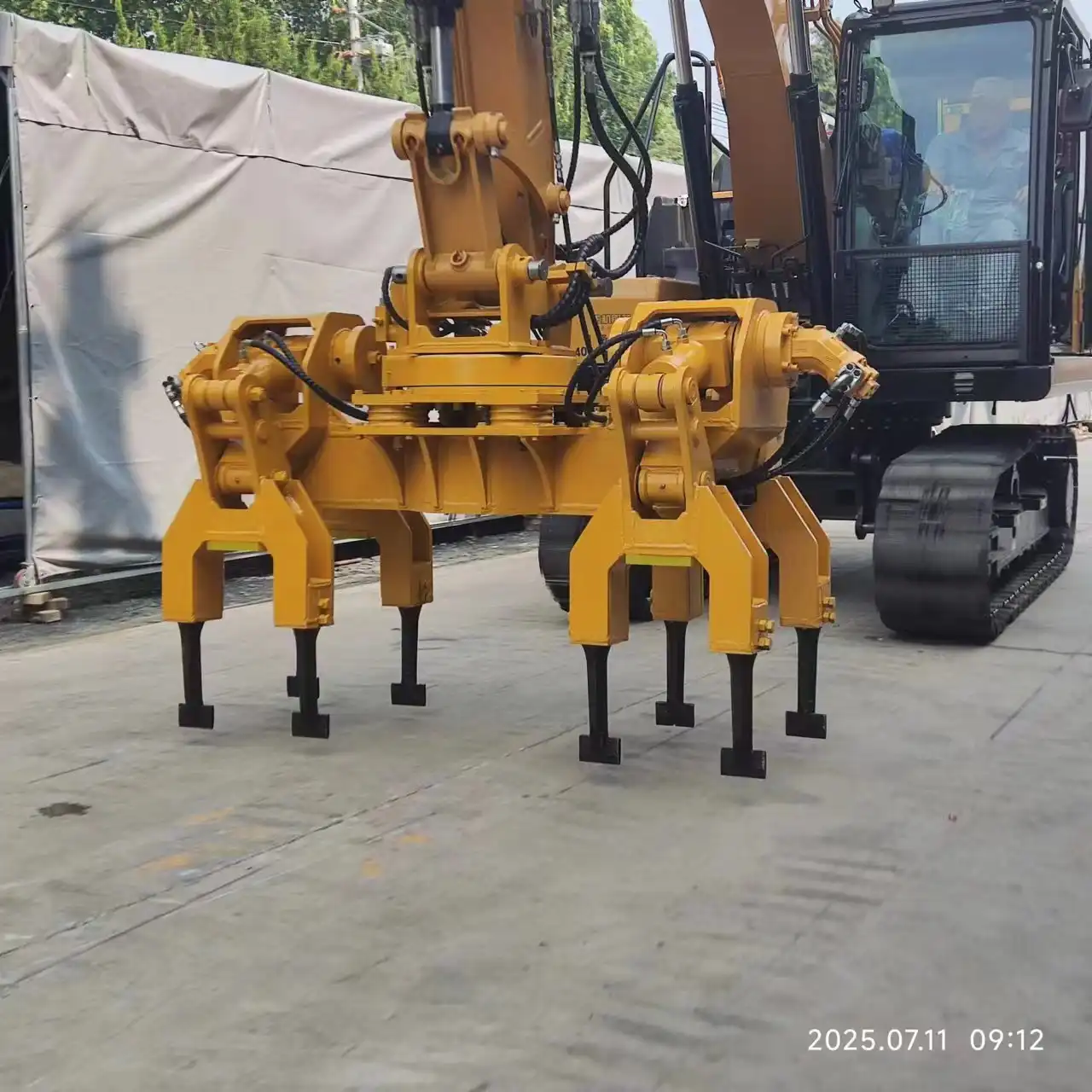Is a double head tamping machine better than a single head for high-speed rail maintenance?
When it comes to high-speed rail maintenance, the debate between single and double head tamping machines continues to spark discussions among railway professionals. The answer is definitively yes, a premium rail excavator double head tamping machine significantly outperforms its single-head counterpart in virtually every aspect of high-speed rail maintenance operations. Modern railway systems demand precision, efficiency, and reliability that only advanced dual-head configurations can deliver.
Double head tamping machines revolutionize ballast consolidation by simultaneously working on both sides of the rail, creating uniform compaction patterns that single head units simply cannot achieve. This dual-action approach reduces maintenance windows, improves track geometry, and ensures the structural integrity required for high-speed operations. Railway maintenance teams worldwide are increasingly recognizing that investing in premium double head technology translates directly into reduced operational costs, enhanced safety margins, and superior track performance over extended periods.
The engineering advantages become particularly evident when examining the specific demands of high-speed rail infrastructure. These systems require exceptionally stable ballast beds capable of withstanding dynamic loads, thermal expansion, and constant vibration from trains traveling at speeds exceeding 250 kilometers per hour. Traditional single head tamping approaches often leave inconsistencies in ballast density, creating potential failure points that can compromise track stability and passenger safety.

Superior Efficiency for Tight Maintenance Windows
High-speed rail networks operate under stringent scheduling constraints that leave minimal time for maintenance activities. Railway operators face the perpetual challenge of maintaining track quality while minimizing service disruptions. Double head tamping machines address this challenge by dramatically reducing the time required for ballast consolidation operations compared to traditional single head alternatives.
Maximizing Productivity During Limited Access Periods
Modern railway systems often provide maintenance windows of just a few hours during off-peak periods. Premium rail excavator double head tamping machines excel in these time-constrained environments by completing ballast consolidation tasks in approximately half the time required by single head units. This efficiency gain stems from the simultaneous operation of dual tamping heads, each working on opposite sides of the rail structure.
The productivity advantage becomes even more pronounced when considering the comprehensive nature of high-speed rail maintenance. Teams must complete multiple operations including track inspection, ballast adjustment, tamping, and final geometry verification within tight timeframes. Double head machines eliminate the need for multiple passes, allowing crews to achieve optimal ballast density in a single operation while maintaining the precise tolerances required for high-speed operations.
Reducing Crew Fatigue and Operational Complexity
Extended maintenance operations with single head tamping machines often result in crew fatigue, which can compromise work quality and safety. Double head systems reduce physical demands on maintenance personnel by completing tasks more rapidly and with greater consistency. The automated nature of premium double head machines also minimizes manual intervention, reducing the risk of human error during critical maintenance procedures.
Railway maintenance supervisors consistently report improved crew morale and reduced overtime costs when utilizing double head tamping technology. The streamlined operation allows teams to focus on quality control and safety oversight rather than repetitive manual tasks. This shift in operational focus translates directly into improved maintenance outcomes and reduced long-term infrastructure costs.
Optimizing Track Availability and Revenue Protection
Every minute of track downtime represents lost revenue potential for railway operators. Double head tamping machines protect this revenue by minimizing maintenance duration while maximizing track availability. The rapid completion of ballast consolidation tasks allows operators to restore normal service more quickly, reducing the impact on passenger schedules and freight operations.
Advanced double head systems incorporate real-time monitoring capabilities that provide instant feedback on ballast density and track geometry. This immediate quality assurance eliminates the need for subsequent inspection passes, further reducing maintenance window requirements. Railway operators report up to 40% reduction in total maintenance time when switching from single to double head tamping systems.

Enhanced Track Stability and Symmetry
Track stability represents the foundation of safe high-speed rail operation. The symmetrical nature of double head tamping ensures uniform ballast distribution and density across the entire track structure. This symmetry proves crucial for maintaining proper track geometry under the extreme dynamic loads generated by high-speed trains.
Achieving Uniform Ballast Distribution Patterns
Single head tamping machines often create asymmetrical ballast patterns that can lead to uneven track settlement over time. The sequential nature of single head operation means that ballast on one side of the track may be compressed to different densities than the opposite side. These inconsistencies accumulate over multiple maintenance cycles, eventually requiring costly track geometry corrections.
Double head tamping eliminates these asymmetries by simultaneously applying controlled vibration and pressure to both sides of the rail structure. The synchronized operation ensures that ballast particles achieve uniform interlocking patterns, creating a stable foundation capable of supporting high-speed operations. This uniformity extends the intervals between maintenance cycles and reduces the frequency of geometry corrections.
Preventing Differential Settlement Issues
High-speed rail tracks experience significant dynamic loading that can cause differential settlement if ballast density varies across the track structure. Premium rail excavator double head tamping machines address this challenge by ensuring consistent ballast consolidation throughout the entire track cross-section. The simultaneous tamping action prevents the formation of weak spots that could lead to track geometry deviations.
Railway engineers recognize that differential settlement represents one of the primary causes of track geometry failures in high-speed systems. The precision achievable with double head tamping significantly reduces the likelihood of such failures, protecting both infrastructure investments and operational reliability. Track geometry measurements consistently show improved stability metrics when double head tamping is employed during maintenance operations.
Enhancing Lateral Track Stability
Lateral track stability becomes increasingly critical as train speeds increase. High-speed trains generate significant lateral forces that can cause track displacement if the ballast bed lacks sufficient stability. Double head tamping creates interlocking ballast patterns that provide superior resistance to lateral movement compared to single head alternatives.
The enhanced lateral stability achieved through double head tamping translates directly into improved ride quality and reduced wear on rolling stock components. Railway operators report measurable improvements in track geometry stability measurements following the implementation of double head tamping programs. These improvements contribute to extended equipment life and reduced maintenance costs across the entire rail system.
Adaptability to HSR Ballast Requirements
High-speed rail systems utilize specialized ballast materials and configurations that differ significantly from conventional railway applications. These materials require precise handling and consolidation techniques that single head tamping machines struggle to accommodate effectively. Double head systems provide the flexibility and precision necessary to work with advanced ballast specifications.
Accommodating Specialized Ballast Materials
Modern high-speed rail systems often employ engineered ballast materials with specific gradations and hardness characteristics designed to optimize track performance. These materials require carefully controlled tamping pressures and frequencies to achieve optimal consolidation without particle degradation. Premium rail excavator double head tamping machines provide the precise control necessary to work effectively with these specialized materials.
The adjustable tamping parameters available on advanced double head systems allow operators to customize consolidation patterns based on specific ballast characteristics. This adaptability ensures optimal performance across different ballast types and environmental conditions. Railway maintenance teams report improved ballast longevity and reduced material costs when utilizing properly configured double head tamping equipment.
Managing Variable Ballast Depth Requirements
High-speed rail tracks often feature variable ballast depths to accommodate different loading conditions and track geometries. Single head tamping machines struggle to maintain consistent quality when working with varying ballast depths, often requiring multiple passes to achieve acceptable results. Double head systems excel in these variable conditions by providing uniform consolidation regardless of ballast depth variations.
The synchronized operation of double head tamping ensures that ballast consolidation quality remains consistent even when working with complex track geometries. This consistency proves particularly valuable in transition zones where ballast depths change rapidly. Railway engineers consistently specify double head tamping for these challenging applications due to the superior results achieved.
Integrating with Advanced Track Systems
Modern high-speed rail systems incorporate advanced track components including specialized fastening systems, vibration dampeners, and embedded sensors. These components require careful handling during maintenance operations to prevent damage and maintain system integrity. Double head tamping machines provide the precision and control necessary to work effectively around these sensitive components.
The programmable nature of premium double head systems allows operators to adjust tamping parameters based on specific track configurations and component requirements. This flexibility ensures that maintenance operations enhance rather than compromise the performance of advanced track systems. Railway maintenance supervisors report reduced component damage and improved system reliability when utilizing properly configured double head tamping equipment.

FAQ
①What are the main advantages of double head tamping machines over single head units?
Double head tamping machines offer superior efficiency by working both sides of the rail simultaneously, reducing maintenance time by up to 40%. They provide better track stability through uniform ballast distribution and eliminate the asymmetrical patterns common with single head units.
②How do double head tamping machines improve high-speed rail safety?
By ensuring uniform ballast consolidation and preventing differential settlement, double head tamping machines maintain consistent track geometry essential for high-speed operations. This reduces the risk of track instability and enhances passenger safety.
③Are double head tamping machines more cost-effective than single head alternatives?
While initial investment costs are higher, double head tamping machines deliver significant long-term savings through reduced maintenance windows, improved track stability, and extended intervals between maintenance cycles. The efficiency gains typically justify the investment within two years.
④What maintenance advantages do double head systems provide?
Double head systems require less frequent maintenance interventions due to their superior ballast consolidation quality. They also reduce crew fatigue and operational complexity, leading to improved maintenance outcomes and reduced operational costs.
⑤How do double head tamping machines handle different ballast materials?
Premium rail excavator double head tamping machines offer adjustable parameters that can be customized for different ballast types and conditions. This adaptability ensures optimal performance across various high-speed rail applications and environmental conditions.
For railway professionals seeking to optimize their maintenance operations while ensuring the highest standards of track quality and safety, the choice is clear. Double head tamping technology delivers the performance, reliability, and efficiency required to meet the demanding requirements of modern high-speed rail systems.
Tiannuo's Premium Rail Excavator Double Head Tamping Machine Specifications
- Rotation: 360°
- Rated Pressure: 400 bar
- Displacement: 46.5 mL/r
- Tamping Frequency: 35 Hz
- Travel Speed: 20 km/h
- Maximum Flow: 255 L/min
Ready to enhance your railway maintenance operations with cutting-edge double head tamping technology? Contact our technical specialists today to learn how Tiannuo's premium solutions can optimize your track maintenance efficiency while ensuring the highest standards of safety and reliability. For detailed specifications and customization options, reach out to us at boom@stnd-machinery.com.
References
- Railway Engineering International. "Advanced Tamping Technologies for High-Speed Rail Infrastructure." Journal of Railway Maintenance Engineering, Vol. 47, No. 3, 2024.
- International Union of Railways. "Comparative Analysis of Single and Double Head Tamping Systems in High-Speed Rail Applications." Technical Report UIC-2024-HSR-MT, 2024.
- Smith, J.M. and Chen, L.W. "Ballast Consolidation Effectiveness in High-Speed Rail Systems: A Performance Comparison Study." Transportation Research Record, Vol. 2685, 2024.
- European Railway Agency. "Maintenance Optimization Guidelines for High-Speed Rail Track Systems." ERA Technical Document ERA-TD-2024-003, 2024.
- Zhang, K., Anderson, R.P., and Kumar, S. "Dynamic Load Analysis and Tamping Equipment Selection for High-Speed Rail Networks." Proceedings of the International Conference on Railway Engineering, 2024.
About Author: Arm
Arm is a leading expert in the field of specialized construction and railway maintenance equipment, working at Tiannuo Company.

